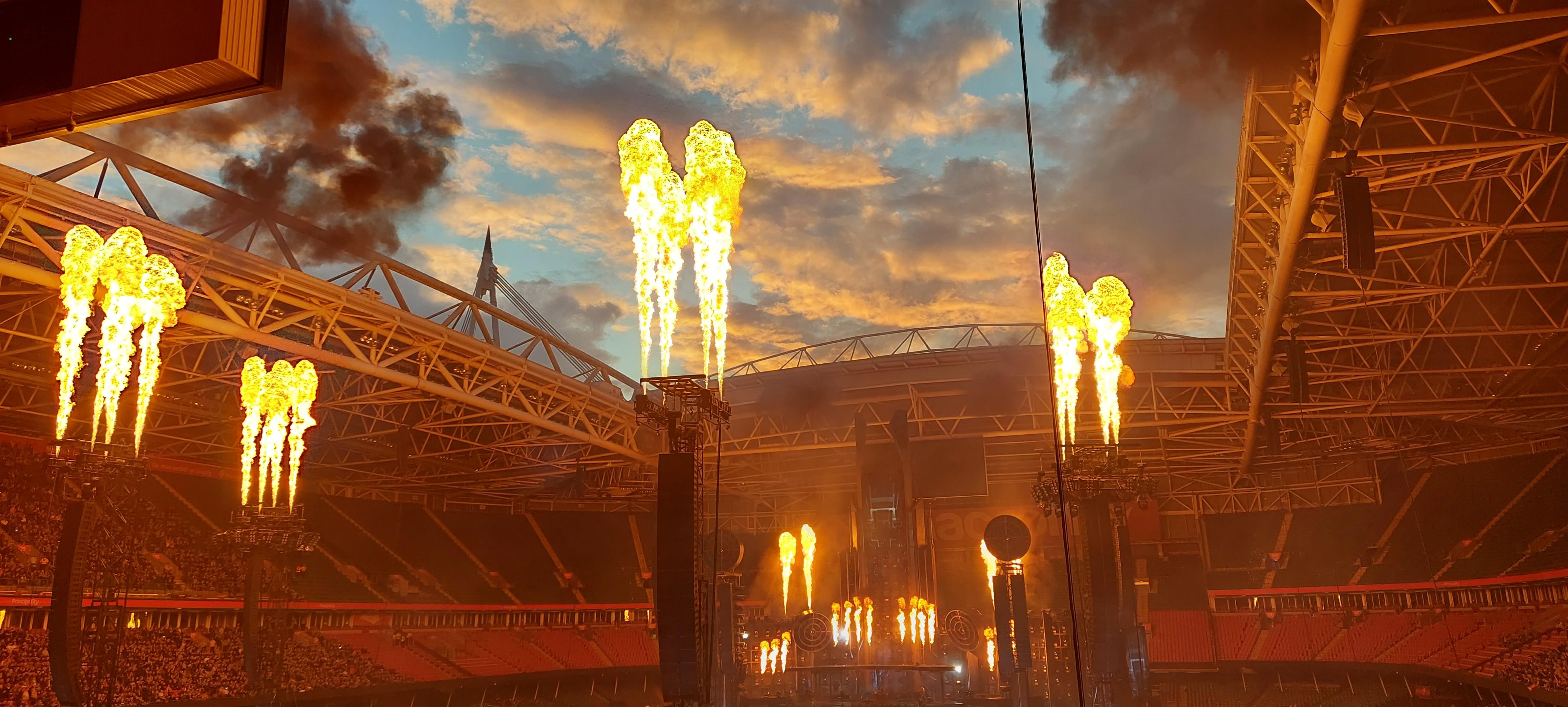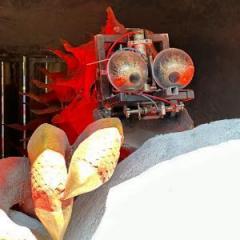
Everything posted by Benin
-
The Smiler
It's actually carriage rotation that's mentioned either side of the degree number, so it doesn't necessarily point towards a 'carriage that will rotate'...
-
The Smiler
Picture evidence from TowersStreet... EDIT - Towers Guide with an another one with probably imagery... EDIT EDIT - There's also a video (ATG, https://www.facebook.com/photo.php?v=10151364713136050) which confirms a 'DISORIENTATOR' element, which will probably be the indoor inline with added effects (I hope, an extra silly element would potentially detract from the experience)... EDIT EDIT EDIT - https://www.facebook.com/photo.php?v=10151364779916050&set=vb.168150643216122&type=3&permPage=1
-
Getting someone to ride a roller coaster
I've found that dragging people on against their will is a good method (to which Holly, Nicky and a few other people throughout my life shall attest)... Alternatively, a build-up technique to the bigger rides is a decent idea...
-
Random Picture Thread.
- 2013 Changes
And theme parks don't have months of being packed solid between the hours of 9-6 (possibly longer at late notice)? I think it's more a lot of people here are comparing the role of ride host to the wrong things... It's an unique role as it features so many different aspects (guest interaction, safety, throughput focus, etc) which when a park is at full capacity of guests angry as they keep having to queue for rides and what-not, it's not a role for the light-hearted... What mentality? Some of us are stating that ride staff work excessively hard for long extended periods of time over the March-November season... Closing a park at 11pm would not be beneficial to those younger staff members (as mentioned, UK parks hire a LOAD of young seasonals) if they have to hang around in an area which isn't the easiest to travel to (I doubt many buses run after 11pm, or trains) car aside... Having experienced Chessie at high numbers (18k odd a few times), it's near as damn akin to Christmas shopping busyness... And lasts for two months as well...- 2013 Changes
Clearly you have never worked in a theme park environment... I'm sure if you actually did a couple of shifts (let's say you start at 2 for the evening shift) for a typical 8 hour day at any park during busy season and had to stay behind until gone 1am you wouldn't say the same thing... The staff's well-being would come into any decision based on work hours... That's pretty simple management right there... And the theme park industry is a very different kettle of fish to the other job roles you listed... Indeed, how is sitting in a call centre comparable? And of course shops and petrol stations are always packed at 11pm in the evening with staff rushed off their feet... Restaurants are really the only similar place of work for having to speed around everywhere (and is more likely a more difficult job than theme park lackey), but it also still has quiet hours (dinner rush is what, 6-9 on average? So even for a late opening restaurant, not that many remain busy at 11pm)... But as I said, it's quite clear you've not worked on rides, otherwise you would give a crap about the staff...- Youtube Videos
- Zufari
A thought occurs, the stupidly high fencing surround the ride and the area, do we reckon it's because of the infamous Tomb Blaster fall? Just an explanation behind it then (not that it makes ANY sense)...- Random Picture Thread.
- The Smiler
Don't think they'll have to worry too much about it taking forever to set (or not do so, another issue they encountered this year) with the way the weather is looking...- Music
- The Smiler
Josh, you forgot: *watching test video* "It's running way too slow to be any good"- Youtube Videos
- The Smiler
- X
- 2013 Changes
I TRIED to buy a snack whilst waiting for Dreams, but as Disney Paris are crap they had shut all the popcorn stands AND the crepe shop... And I'm sure the staff would love to deal with a 2 hour queue on Saw at 11pm... And I again mention transport links as a potential issue to late night openings... As said, Thorpe does not have enough non-ride stuff or is big enough to warrant excessive opening times... Indeed, plan smart and you can get the park done in 3 hours, have lunch and go home... IF they brought in things to do OTHER than queue (which is another issue, after lunch activities are basically, queue or queue) up for things and space out the day more (like the old Farm, but that isn't great for the new audience) Thorpe would definitely see a rise in guest satisfaction...- The Smiler
Isn't the old noise restriction order put on the park (and that area) still in place? Considering lifts are only generally noisy because of the anti-rollbacks, I would say that it is a noise related thing...- Tokyo Disney
Disney Awesome... [Local Positioning System Dark Ride, akin to Tokyo's Winnie the Pooh dark ride]- The Smiler
From Towersstreet The jacket................................................ The blonde- Sea World
Meanwhile, at SeaWorld... Source - Screamscape- The Smiler
25 days worth of testing required apparently... Still doable to open mid-May (although maybe not the penciled in date of the 18th, looking like the week after (which is Half Term, wahey) atm), as they can still finish the paths/fences/etc (which have already been started) during testing like they did with Swarm (and every other coaster ever)... Shame it's so late, because quite frankly, it's amazing to look at... But this might give Merlin a little poke in the face to say "Look, this is what happens when you rush massive coaster projects! Unexpected delays happen and cause it to finish/open late and in excess cause issue with guest numbers"... I think the compact nature of the ride also didn't particularly help construction either as well (in addition to the groundwork trouble, snow, wind, alien beasties rising up from the ground, secret vaults being discovered, curses, etc)... This project is probably the most complex in the UK (the more they built, the more complicated it got to build the rest of it with lack of space, etc), and definitely sits up there with Oblivion and Nemesis for complexity... Either way, looks like it might be opening when I'm away, which is good, means I can avoid the inevitable descension of goons on the park and the inevitable cries of it being 'crap', 'rough', 'not better than Nemesis', etc.- 2013 Changes
If they're gonna have a later park opening they'd have to put on a fair few more buses over the night... Wonder how much that'll cost them...- Next Big Thing - 2016 Development ?
A correct Grammar Coaster?- Lightwater Valley
No sarcasm, it's just a result of a stupid censor system...- Lightwater Valley
Why the feck is Light-water on the censor-list? *facepalm* - 2013 Changes
Account
Navigation
Search
Configure browser push notifications
Chrome (Android)
- Tap the lock icon next to the address bar.
- Tap Permissions → Notifications.
- Adjust your preference.
Chrome (Desktop)
- Click the padlock icon in the address bar.
- Select Site settings.
- Find Notifications and adjust your preference.
Safari (iOS 16.4+)
- Ensure the site is installed via Add to Home Screen.
- Open Settings App → Notifications.
- Find your app name and adjust your preference.
Safari (macOS)
- Go to Safari → Preferences.
- Click the Websites tab.
- Select Notifications in the sidebar.
- Find this website and adjust your preference.
Edge (Android)
- Tap the lock icon next to the address bar.
- Tap Permissions.
- Find Notifications and adjust your preference.
Edge (Desktop)
- Click the padlock icon in the address bar.
- Click Permissions for this site.
- Find Notifications and adjust your preference.
Firefox (Android)
- Go to Settings → Site permissions.
- Tap Notifications.
- Find this site in the list and adjust your preference.
Firefox (Desktop)
- Open Firefox Settings.
- Search for Notifications.
- Find this site in the list and adjust your preference.



